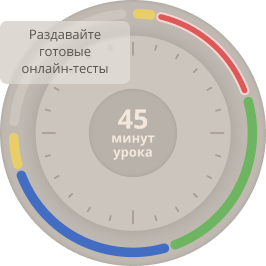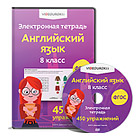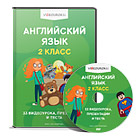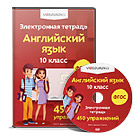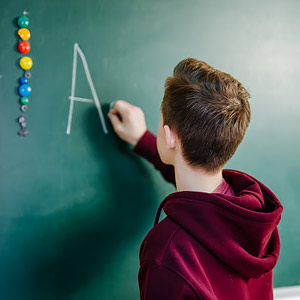
Разработка
открытого урока
в 7 классе на тему
‘Travelling the world’
Подготовила:
учитель английского языка
школы № 61
Яшнабадского района
Тур О. И.
Ташкент – 2016
Учебно-воспитательные цели:
Образовательная: обобщить усвоенный материал по теме: «Traveling the World. Famous spots»
Развивающая: формировать устную речь, умение грамотно излагать свои мысли, умение понимать иностранную речь на слух. Способствовать навыку работы над новым материалом.
Воспитательная: воспитывать у учащихся любовь и уважение к родной стране, любовь к Родине, гордость за наследие предков.
Тип урока: нетрадиционный, мультимедийный.
Оснащение урока: иллюстрированные картинки, карточки с заданиями, тесты; презентация PowerPoint.
The plan of the work:
GRAMMAR FOR REVISION:
PREPOSITIONS WITH TRANSPORT
ADGECTIVES – COMPARISON
PRESENT SIMPLE IN PASSIVE
WHAT…LIKE?
PRESENT PERFECT (BEEN TO/JUST/YET/EVER/NEVER)
BE GOING TO
INFINITIVE OF PURPOSE
ADGECTIVES +ED/ING
PAST SIMPLE VS PRESENT PERFECT
TOPICS FOR DISCUSSION:
MEANS OF TRANSPORTATION (PREPOSITIONS, COMPLETING THE TABLE)
ADGECTIVES COMPARISON – THE FASTEST, THE CHEAPEST
AT AN AIRPORT. CATCHING A PLANE
TELL ME! WHAT IS IT LIKE? (THREE CITIES. COMPARISON)
HAVE YOU BEEN TO? COUNTRIES AND FLAGS. A COUNTRY AND AN ACTIVITY
HOW DID YOU FEEL WHILE TRAVELING?
MARCO POLO, THE GREAT TRAVELLER. TOMMY WILLIS – BACKPACKER IN ASIA
DREAMS COME TRUE
WONDERS OF THE WORLD
SIGHTSEEING IN UZBEKISTAN
1. Organizational point: greeting and checking those who are absent.
Teacher: - Good morning to everybody.
Pupils: - Good morning.
Teacher:- Is anybody absent?
Pupil:- All are present today.
Teacher: - Thank you.
2. Announcing the plan of the lesson.
Teacher: - Pupils, today we have an unusual lesson, devoted to travelling. During our lesson we shall go to Samarkand, Bukhara and Khiva. We shall speak about these cities and their most important sights. We’ll recycle such topics, as ‘been to’, ‘adjectives with –ed/-ing’ and infinitive of purpose. We’ll sing a song and do tests you’ve prepared yourselves.
Well, I think we can start our lesson.
3. Recycling - Means of transportation.
Teacher: - Who likes to travel? I think, everybody. Trips are always wonderful. However, what is the most important thing in traveling? Firstly - vehicles. Tell me, please, what means of transportation do you know? We can travel by car, by bus – what else? …
(Pupils start listing means of transportation.)
Teacher: - Which is the fastest?
Pupil x: - A plane.
Teacher: - What about the slowest?
Pupil y: - On foot, I think.
Teacher: - The most exciting?
Pupil: - For me – train.
Teacher: - Why?
Pupil: - Because it is not slow and we have time to notice everything on the way.
4. Recycling - ‘been to’.
Teacher: - Great. Now I would like you to tell me what countries you have already been to.
As for me, I’ve been to Turkey. And you? Where have you been?
Pupil x: - I’ve been to …,Pupil y: - I’ve been to …. , Pupil z:- I’ve been to … .
Teacher: - So, tell me please. What did you travel by?
Pupil x: - I traveled by plane; Pupil y:- I travelled by train (etc).
5. Recycling - ‘Adjectives with –ed/-ing’.
Teacher: - Now I would like to know your opinions about the trips. For this you will need a rule ‘–ing and –ed adjectives’. Let me remind it: –ing adjectives describe a situation, person, or thing. For example:an interesting film, a boring teacher, an excitinf film. –ed adjectives describe how people feel. For example:I’m very interested in modern art. We were bored at the end of the lesson. She’s exciting about going there.
Can you give me your own examples?
Pupil x: - An amusing story, a shocking film, an exhausting journey.
Pupil y: - A bored person, an exhausted runner, a surprised visitor.
Thank you. To check your understanding I want you to tell me – how do these people feel? (There is a picture with 5 people having different face expressions.)
Teacher: - Tell us, please, how do these people feel?
Pupils: - The first guy looks frightened. The old man looks exhausted. The girl looks surprised. The both people look excited. The last girl seems worried.
Teacher: - Well done. Now, let’s practice the rule. If you remember, I wanted you to express your feelings about the trip you had.
Let me be the first. Here is my example:
(Pupils express their opinions.)
6. Recycling – ‘Infinitive of purpose’.
Teacher: - Now I want you to recycle infinitive of purpose. I hope, you remember the topic. Here you see a table. It consists of 2 columns. Different countries on the left and purposes of visiting on the right. We have to match them correctly. But firstly can you read them in turns? We are starting from the first desk.
Pupils: - Holland, Spain, Moscow, Egypt, Kenya, India, China, Japan, the USA, Rio. And continue reading. Visit the Pyramids, fly over the Grand Canyon, see mount Fuji…
Teacher: - Thank you. Now I want to give my own example of matching. We can visit Holland to see the tulips. Who’s the next?
Pupils: - We can visit Egypt to see the Pyramids… (etc.)
Teacher: - Well done. As we remember, several pupils visited some countries, too. Group mates, ask them about the aim of their trips. I can answer first, by the way - I traveled to Turkey to meet my aunt. And you? Please, group mates, ask our travelers.
Pupil 1:-Why did you go to Russia?
Pupil 2:-I went there to see my grandparents.
Pupil 3:-Why did you go to Kazakhstan?
Pupil 4:-I went there ...
Teacher: - Great. And now, my questions is – why can we go travelling round Uzbekistan?
Pupil 1: - To see Samarkand.
Pupil 2: - To visit Bukhara.
Pupil 3: - To go sightseeing in Khiva.
Teacher: - You are right. These are well-known ancient cities of our motherland.
7. Presentation of Samarkand.
Teacher: - And now it’s time to set for a journey. (This time pupils see a slide – map of Uzbekistan with three cities marked..)As you’ve noticed we have three groups – representatives of the wonderful cities – Samarkand, Bukhara and Khiva, the brilliant cities of our motherland. Leaders, come here and take three pyramids each for your desks. Each group consists of 6 participants. We are going to see a brief presentation of the cities. Our pupils have prepared information about one main sight each. We have a competition today and it’s starting right now. I want to see which group can remember more today about the three cities.
Don’t forget, pupils, your main aim is not only to present your town in a better way, but also to remember as much about the other cities, as possible. The more information you remember, the more chance to win you have.
Please, our first group – Samarkand – come out to the blackboard. We’d like to listen to your presentation.
Pupil 1: - Good morning to everybody. We’d like to present Samarkand. Samarkand (also known as"Stone Fort" or "Rock Town") is the second-largest city in Uzbekistan and the capital of Samarqand Province. The city is most noted for its central position on the Silk Road between China and the West, and for being an Islamic centre for scholarly study.
Pupil 2: - Here you can see the Registan - the ancient center of the city. It is one of the most relevant examples of Islamic architecture. It consists of three separate buildings: Madrasa of Ulugh Beg, Sher-DorMadrasah andTilya-Kori Madrasah.
Pupil 3: - Another outstanding architectural construction of medieval Samarkand is the main mosque Bibi-Khanim. Its construction began in 1399, after Timur's victorious campaign on India.
Pupil 4: - Gur-e Amir Mausoleum (1404) is the mausoleum of the Asian conqueror Tamerlane (also known as Timur) in Samarkand (now in Uzbekistan). It occupies an important place in the history of Islamic Architecture, built by Timur's descendants, the ruling dynasty of North India.
Pupil 5: - In my picture you can see Observatory of Ulugh Beg (1428–1429), famous grandson of Amir Temur. In 1428 he founded a three-story observatory with a gigantic marble sextant measuring 40,212 (forty thousand point two hundred and twelve) meters and with an arc length of 63 meters.
Pupil 6: - The Shah-i-Zinda Ensemble includes mausoleums and other ritual buildings of 9-14th and 19th centuries. The name Shah-i-Zinda (meaning "The living king"). The Shah-i-Zinda complex was formed over nine (from 11th till 19th) centuries and now includes more than twenty buildings.
Pupil 1: - Thank you for attention.
Teacher: - Students, who has been to Samarkand?
Pupil: - I have.
Teacher: - What can you tell us about the trip?
Pupil: - The weather was wonderful. We went there in late spring for 3 days. We stayed in a hotel with the friends of ours. We saw Registan, Gur-Emir, TheShahi-Zinda there. I liked it a lot.
Teacher: - Thank you.Well, who is the next?
8.Presentation of Bukhara.
Teacher: - Well, who is the next?
Pupil 7: - We are! Good morning to everybody. The city we’ve chosen is Bukhara. Bukhara), from the Soghdian βuxārak ("lucky place"), is the capital of the Bukhara Province (viloyat) of Uzbekistan. The nation's fifth-largest city, it has a population of 263,400 (2009 census estimate). The region around Bukhara has been inhabited for at least five millennia, and the city has existed for half that time. Located on the Silk Road, the city has long been a center of trade, scholarship, culture, and religion. The historic center of Bukhara has been listed by UNESCO as a World Heritage Site.
Pupil 8: - The title Po-i Kalan (meaning the "Grand Foundation"), belongs to the architectural complex located at the base of the great minaret Kalân. It was built in 12-14 centuries.
Pupil 9: - Kalyan minaret. More properly, Minâra-i Kalân, (Pesian/Tajik for the "Grand Minaret"). It is made in the form of a circular-pillar brick tower, narrowing upwards. Also known as the Tower of Death, as for centuries criminals were executed by being tossed off the top.
Pupil 10: - The Ismail Samani mausoleum (9th-10th century), one of the most esteemed sights of Central Asian architecture, was built in the 9th century (between 892 and 943) as the resting-place of Ismail Samani - the founder of the Samanid dynasty.
Pupil 11: - The Ark is a massive fortress located in the city of Bukhara, Uzbekistan that was initially built and occupied around the 5th century AD. The Ark was used as a fortress until it fell to Russia in 1920. Currently, the ruins of the Ark are a tourist attraction and house museums covering its history.
Pupil 12: - Mir-i Arab Madrassah. Little is known about its origin, although its construction is ascribed to Sheikh Abdullah Yamani of Yemen, the spiritual mentor of early Shaybanids. He was in charge of donations of Ubaidollah Khan (gov. 1533-1539), devoted to construction of madrasah.
Pupil 7: - I think this is everything we wanted to tell you. Thank you.
Teacher: - I liked you presentation. But have you ever been to Bukhara?
Pupil x: - No, we have not. But we’d like to very much, especially now when we’ve learned so much about this wonderful city.
Teacher: - Thank you. I hope you’ll go there one day. And our last, but not the least important group. Come out, please!
9.Presentation of Khiva.
Pupil 13:- Good morning. Our city is Khiva. "Khiva - City of Minarets". Located in the rich irrigated lands of Khorezm oasis on the lower reaches of the Amudaryariver is believed to be 2500 years old. Khiva retains more than 50 historic monuments and 250 old houses, mostly dating from the 18th or the 19th centuries.
Pupil 14:- Khiva is split into two parts – Dichan Kala and Itchan Kala. The outer town, called Dichan Kala, was formerly protected by a wall with 11 gates. Present-day crenellated walls date back to the late 17th century and attain the height of 10 meters.
Pupil 15:- Khiva - a unique city, rightfully claiming the title of "the seventh wonder of the world", thanks to its authentic atmosphere of the 'era of the beginning of time. " Most of the city of Khiva is similar to the open-air museum. And the nucleus of this museum - castle Itchan Kala. It is inside this fortress concentrated all the architectural masterpieces of Khiva.
Pupil 16:- In my picture I have the old town of Khiva. It retains more than 50 historic monuments and 250 old houses, mostly dating from the 18th or the 19thcenturies. The most well-known sight here is Abdulla Khan Madrasah (1855). It was built by Abdulla Khan's mother in 1855 in honor of MuradInaq's son who had been killed at the age of 17 in the fight against Turkmen yomuds.
Pupil 17:- One curious fact draws people's attention - the five Khiva's minarets are erected on the same line about 200 meters far from each other. Minaret of Djuma-Mosque is in the center of that line. It's 6.2 meters in diameter at the basis and 32.5 meters high.
Pupil 18:- "Khiva - Minaret KaltarMinar" (1855). A magnificent large tower in the central city square also kown as the Guyokminar ("green minaret"). It is the only minaret in the world entirely covered by a set of glazed bricks and majolica. It wasn’t finished as you see because of the khan death.
Pupil 13:- Now I think we’ve finished. Let us present our cities for the last time. Try to remember as much, as possible.
Teacher: - I know that one of you has relatives in Khiva.
Pupil x: - Yes, it’s me. My aunt and her children live there.
Teacher: - How often do you visit them?
Pupil y: - Not often, really. But every time I’m there we go sightseeing. The city is amazing.
Teacher: - Thank you. Take your seats, please. I’d like your leader to stay. And the other, two, we are waiting for you. I want to ask you to remind your presentations to help our participants remember them.
(Each leader announce his/her picture once more.)
Teacher: - Thank you. Take your seats.
10.Tests.
Teacher:- Now you can see all the sights mentioned in your presentations. I want to ask the leaders of the groups to replace the pyramids you have. You have 3 minutes to sort out the sights in three groups according to the cities Be careful – don’t mix anything! I think you remember which city each sight belongs to. Also you must answer the tests you see.As you know, the questions were prepared by you, so, at least five of them are going to be easy to answer.
(The slide is – sights of Uzbekistan.)
Teacher: - Well, I think your time is over. I see you have finished. Now I’d like you to stand up in turns and say, why you want to see the three cities. Don’t forget to use ‘infinitive of purpose’. Let me give you my own example.
I think my example is understandable. And now your turn.
Pupil x: - I want to visit Samarkand to see Gur Emir and Shahi-Zinda.
Pupil y: - I want to visit Bukhara to see Kalyan and Ismail Samani mausoleum.
Pupil z: - … .
Teacher: - Thank you.
11. A song ‘Leaving on a jet plane’.
Teacher: - Leaders, bring your works. While I check your answers you listen to a song about leaving on a plane. Please, come here and take words for the song for each member. You task is – some of the words are missing. You have two variants on the right. Listening to the song you have to fill in the gaps. When you’ve finished, I’ll tell you about the results of the tests.
(Pupils listen to the song.)
Teacher: - Ok, I see you’ve finished. Firstly, let’s talk about the song, Did you like it? What was it about?
Pupil x: - About a woman who didn’t want to leave on a jet plane, but had to.
Teacher: - That’s right. NowI want each of you to read a line in the song – but correctly, with the word you’ve added.
(Pupils read the lines in turns.)
Teacher: - You were doing well. Now, let me look through your tests. Your results are: …. .
12.Writing – ‘Things pupils can take on a trip’.
Teacher: - And the last group work you have– is to write down as many things you can take with you on a journey, as you know. You have only five minutes. Here your pieces of paper are.
(Teacher checks the test while pupils do their work.)
Teacher: - You are over. A leader can stand up and read his items aloud. How many of them have you got?
Pupil x (group 1): ….
Teacher: - Well done. What about your group?
Pupil x (group 2): ….
Teacher: - And your group, please?
Pupil x (group 3): ….
13.Conclusion and home task.
Teacher: - Well done. According to our results, our leaders today are …... As I promised, you get your excellent marks.
Your homework is to write a composition on the topic ‘traveling about Uzbekistan’.
Thank you for the interesting lesson. Good bye.
(Pupils stand up.)


